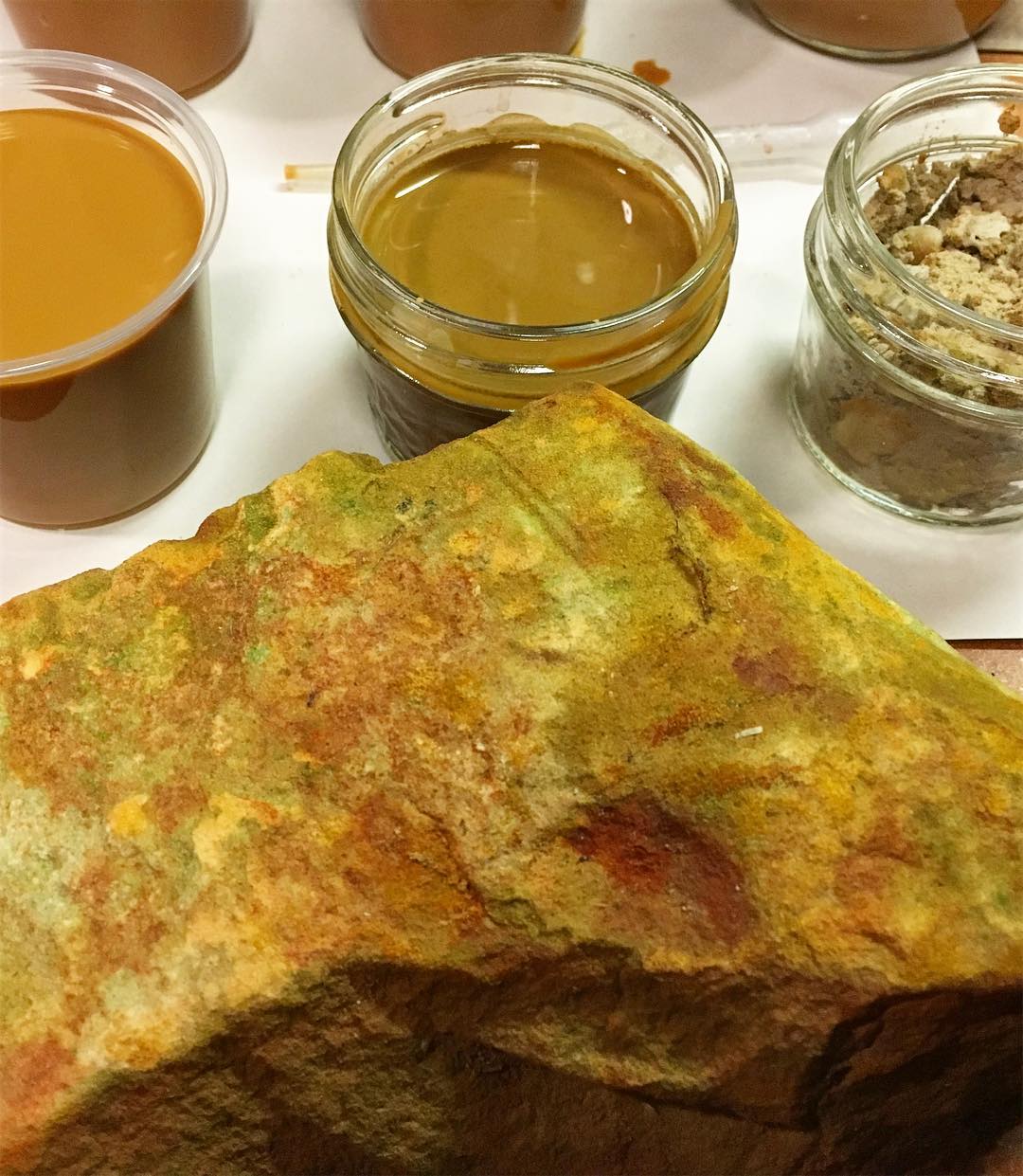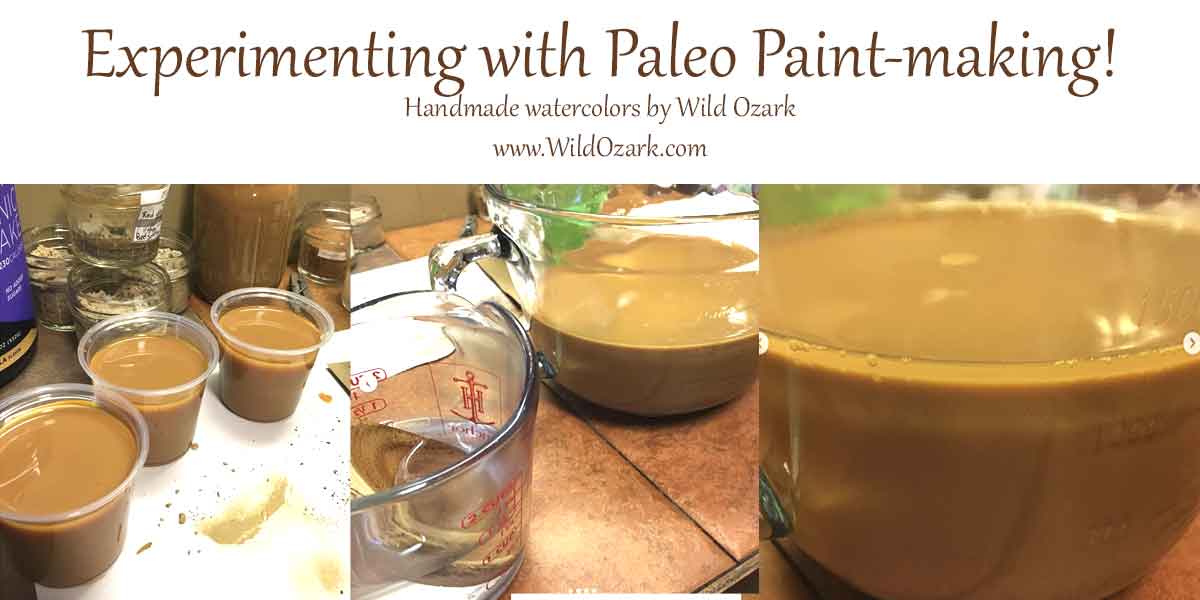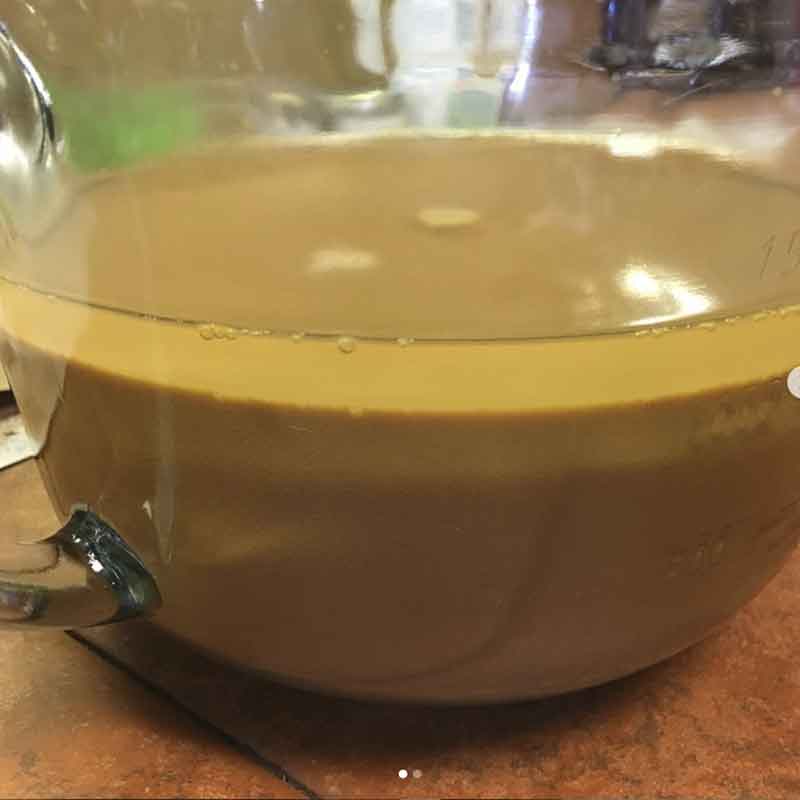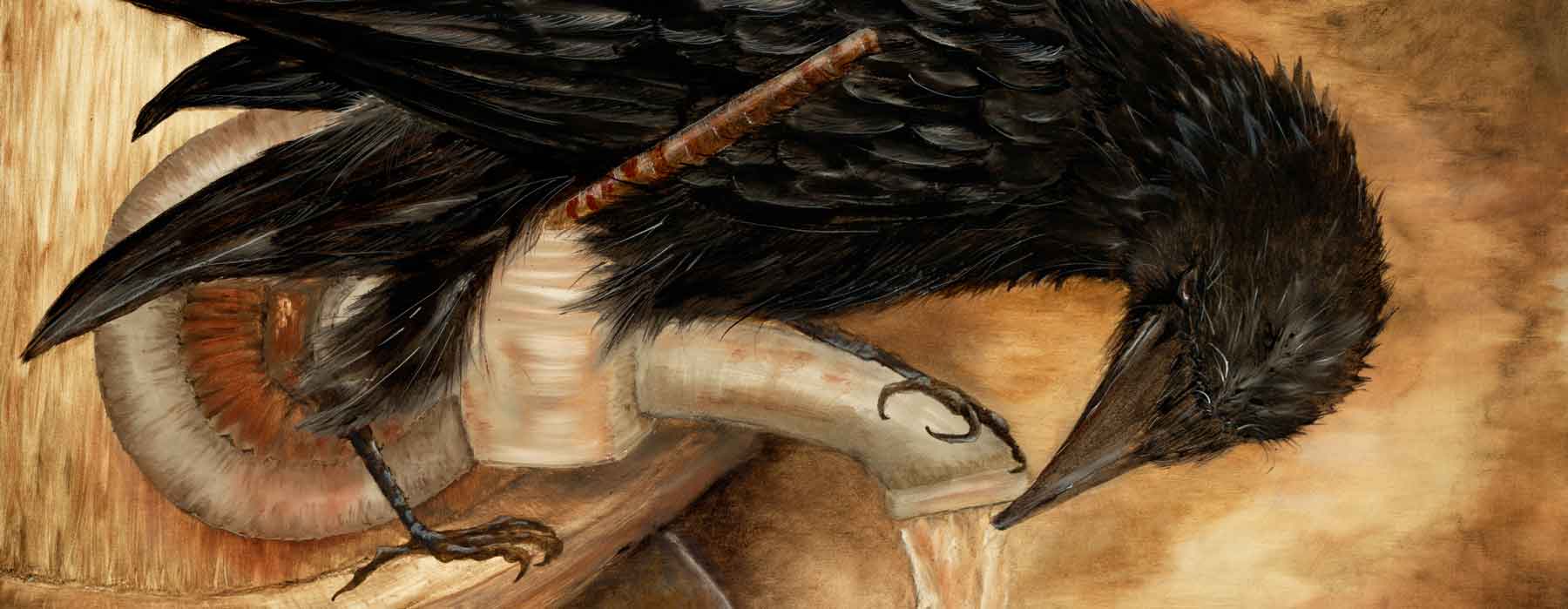A thoughtful person by the last name of Murdoch, who happens also to know a bit of geology, enjoyed my display over at Kingston Square Arts, bought a print, and then came back and left me a box of rocks. And today I embarked on a paint-making experiment with one of those rocks.
It is so awesome to me that people bring me rocks, because that means when they see a colorful rock somewhere, they remember the work I’m doing with them and they want to help. I love it. Since I didn’t ask permission, I won’t use his full name in this post, but usually when someone gifts me a rock, I try to use part of their name in the name of the paint when I’m done.
There were two bags full of nice large rocks. The first bag contained a tricolor sandstone looking rock from just west of Huntsville, Arkansas. So still an Ozark pigment. The second bag are some other interesting rocks from Texas. My friend Michele and I gathered some rocks the last time I was in Texas visiting her, too. So I have enough now to make a Texas collection. Since my husband is from south Texas, it’s a fitting first ‘other’ place I’ll feature.
The tricolor mystery rock

What’s so mysterious?
When I grind up a large rock, I have enough pigment to do some experimenting with. So I mixed all the powder in water and let it settle. Immediately after mixing it up good, I poured all the colored water into other jars and saved the sand that settled quickly. That’s what is in the jars to the far right in the photo above.
The first mysterious thing was how little color was left in that sand! Usually it’s pretty much the same color as the water. That part is what I call the ‘heavies’, because it drops out first.
So I let the water settle a couple of hours and then poured off the still densely colored water into more jars. What had settled were the particles lighter in weight than the first sands and I kept that in a smaller jar and put it in the dehydrator to evaporate the water from it. This part is what I call the ‘middles’. These weren’t mysterious. They looked about like all the other middles do.
The ‘lights’, the parts that stay suspended longest, are the other mysterious thing about this rock. Usually they’ll settle overnight, or at most, in a day or two. These showed no signs at all of settling. It must be a very fine clay. If I can get them to settle, I’ll bet it makes a very smooth paint.
Making the suspended particles settle
One of my first jobs in the science field was in a water quality laboratory at a municipal water plant in Houma, Louisiana. One of the tests we did is called a ‘jar test’. The purpose is to see how much chemical is needed to cause the suspended solids in water to ‘flocculate’. When you floc the water, the suspended solids clump together and become heavier than the water.
Then the solids settle to the bottom and the clear water can be poured or siphoned off. Or as was the case in the water plant, the sludge is filtered out in giant sand filters. The sludge is then disposed of. In this case, the sludge is what I want to keep!
A Paint-Making Experiment & a little chemistry
Yesterday’s paint making experiment was with a using charred bone to make black paint. Today’s is on how to make the suspended particles of clay settle out of the water.
I decided to try alum (aluminum sulfate) to see if it would cause the clay particles to settle. The way this works (without going into balancing equations and all that kind of chemistry stuff, which I’d have to learn all over again to explain) is that the alum has loose protons, which are positive charges. The clay particles have loose electrons, which are negative charges.
When the alum dissolves into the water with the clay all floating around in it, the two opposite charges attract each other and make bigger particles than either of them alone. And so they’re heavy enough to sink.
To make it work a little faster, I added the alum to warm water before putting that into the colored wash water I got from the rock.


The waiting part of a paint-making experiment
So now I’m still waiting. Once all the settling stops, if it’s not complete, I’ll add another cup of warm alum water and let it start again. As it settles and the band of clear water forms at the top, I siphon that off and throw it out. Eventually I should have a good layer of clay at the bottom to work with.
Then I’ll put it into small jars and dehydrate the rest of the water out. Finally, I’ll get to see if it makes a good paint. I’ll let you know how my paint-making experiment turns out with an update here!
Contact Mad Rox: (479) 409-3429 or madison@madisonwoods and let me know which hat I need to put on 🙂 Madison for art, Roxann for real estate, lol. Or call me Mad Rox and have them both covered!
***
Author/Artist Info
________________________________
Roxann Riedel is a salesperson for Montgomery Whiteley Realty, artist, owner of the only ginseng nursery in Arkansas, and the author of books and this website. Madison Woods is the pen-name she uses for her creative works. She’s a self-taught artist who moved to the Ozarks from south Louisiana in 2005. Her paintings of the Ozark-inspired scenes feature lightfast pigments from Madison county, Arkansas. Her inspiration is nature – the beauty, and the inherent cycle of life and death, destruction and regeneration. Wild Ozark is also the only licensed ginseng nursery in Arkansas. Here’s the link for more information on the nursery
There’s always a discount for paintings on the easel 😉
Online Portfolio
Click here to join her mailing list.
LIKE & SUBSCRIBE ON YOUTUBE
https://www.youtube.com/@wildozark

